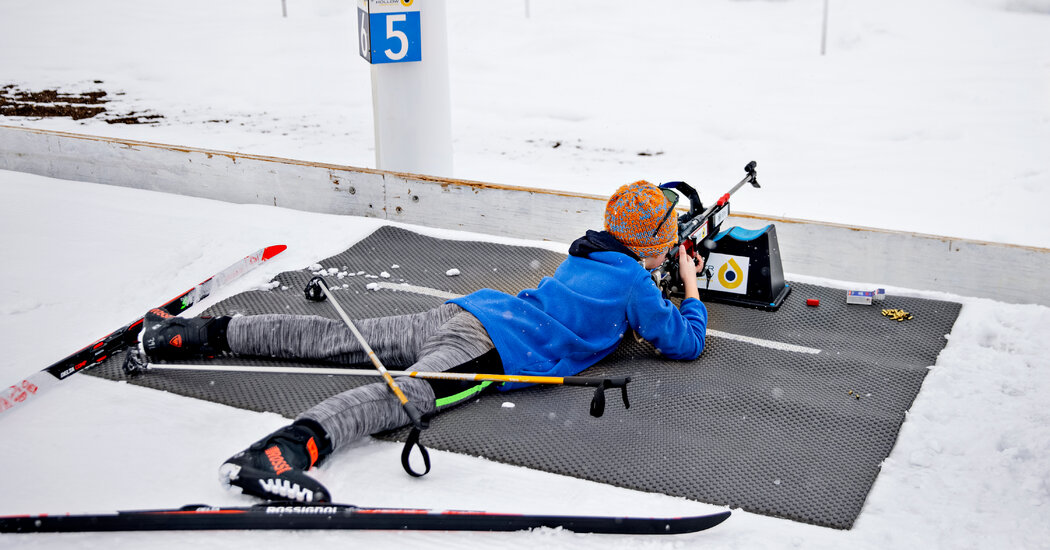I joined a group of eight friends from Salt Lake City. Our instructor, Mix Broadhead, doled out some ski tips, since we were at various skill levels. Then we skied down a gentle incline to the biathlon range.
Mr. Broadhead (whose name tag read “Galaxy Cat”) talked to the group about biathlon’s history and explained the rules. He showed us the backpack-style harness that athletes use to carry their rifles, which weigh seven to eight pounds. He explained that for our introductory experience, we’d all shoot while prone and have short stands to support the rifles, an aid that competitive biathletes don’t use.
As the first half of the group took their places on the mat, the Bubble Wrap-like pops of shots began, followed by a faint smell of gunpowder. A rabbit bravely ran alongside the range before darting away. Shooting was “a little nerve racking, but slightly easier than I expected,” said Celia Pietsch, 33, who, like me, was a first-time gun handler. She hit four out of five targets during the round. But there was a catch — we were shooting at targets set for standing athletes, even though we were lying down. That made it easier, like hitting a beach ball off a golf tee.
For the next round, instructors set the targets at the actual prone level. Ms. Pietsch hit only one of them. Steadying the target within the sight — at this point, it seemed more like a pinprick than an Oreo — was challenging. And we hadn’t even come racing in on our skis. “I was breathing minimally, but every breath moved the target a lot more than I expected,” said another clinic participant, Anna Pardee, 32.
Of course, athletes rely on strategies to achieve the calm and precision needed for the shooting segments. They’ll start to slow their pace about 400 meters ahead of the target range, said Phillip Radu, 16, a competitive biathlete for Team Soldier Hollow who assisted with the clinic. But there’s a fine line between coming in too quickly and not quickly enough. “You can’t go slow too early,” Mr. Radu explained. “If your heart rate drops too much, then a lot of blood gets into your heart and makes your rifle shake. You want to keep your heart rate around 140 when you’re shooting.”
Click Here to Read the Full Original Article at NYT > Travel…
